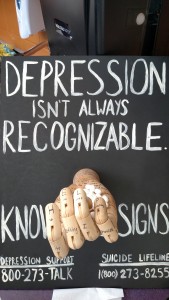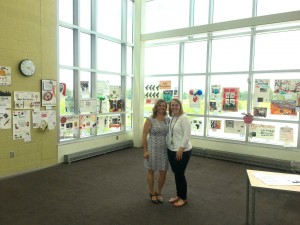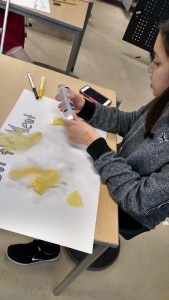After a year of learning about ourselves through literature, nonfiction, art, drama, and music, Reynoldsburg Encore Academy freshmen tackled their first true high school research project. Instead of sticking computers in front of kids and commanding them to “Do some research and write a paper”, we started with some simple questions to generate interest and ideas:
- What about our world/community most concerns, frustrates, or angers you?
- What are you going to do about it?
The lists generated from these questions were, almost literally, endless. Neither the students, nor I knew for sure where this would take us.
For several days, students let their thoughts run free, sharing their opinions on topics such as politics, world hunger, the national debt crisis, genocide, ISIS, self-esteem, rape culture, and the LGBT community. Many students in each class had never even heard of some of the issues others were discussing in passionate detail. So, to broaden students’ perspectives, we viewed a variety of documentary clips on the fast food industry, poverty in the United States, the fashion industry, etc.
Allowing students the freedom to discuss and explore topics before delving into formal research and writing processes gave them the opportunity to establish a true connection and investment in their topics. More importantly, it gave us time as a group to discuss why there are so many social issues and why so many people do not know about them.
At one point, I asked students, “Why should we learn about history and the world around us?” Immediately, a girl responded, “So that it doesn’t repeat itself” almost as if she were a recording, having been programed to say this. I challenged her asking, “But it has, and it continues to, so the real question is: What are we going to do to fix this?”
As a group, the students decided the problem is not that people don’t care or that they don’t want the world to be better; the problem is that people are poorly or misinformed because they do not investigate or ask questions when information is presented to them.
With that said, students officially chose their research topics, wrote papers, and produced individualized public service announcements about their topics. The goal was to establish their voices, make a compelling statement about their topic using an artistic medium, and convince the viewer to care and make a change.
Today, all of the students’ hard work came to fruition as we taped art pieces to the school walls, creating a makeshift gallery.
To boost the project’s authenticity and give students a true audience, a guest judge with nearly a decade of expertise in effective marketing, Mrs. Jena Cooper, came to view and judge students’ work.


As we wrapped up our exhibition, students walked away feeling a sense of pride and ownership. We concluded the day by reflecting on lessons learned from our unit:
“I was surprised to see that people chose topics like rape culture and world poverty; I didn’t know they really cared about those things.”
“We really have to ask questions about what the media says before believing it.”
“Walking through the gallery of all of our hard work and art, it seemed like you could almost feel each person’s passion for their topic.”
“This project has really opened my eyes to the world around us; we need to take action.”
My takeaway? Research papers don’t have to suck out the souls of our students; they can be meaningful, and even fun, with some discussion and creativity.





